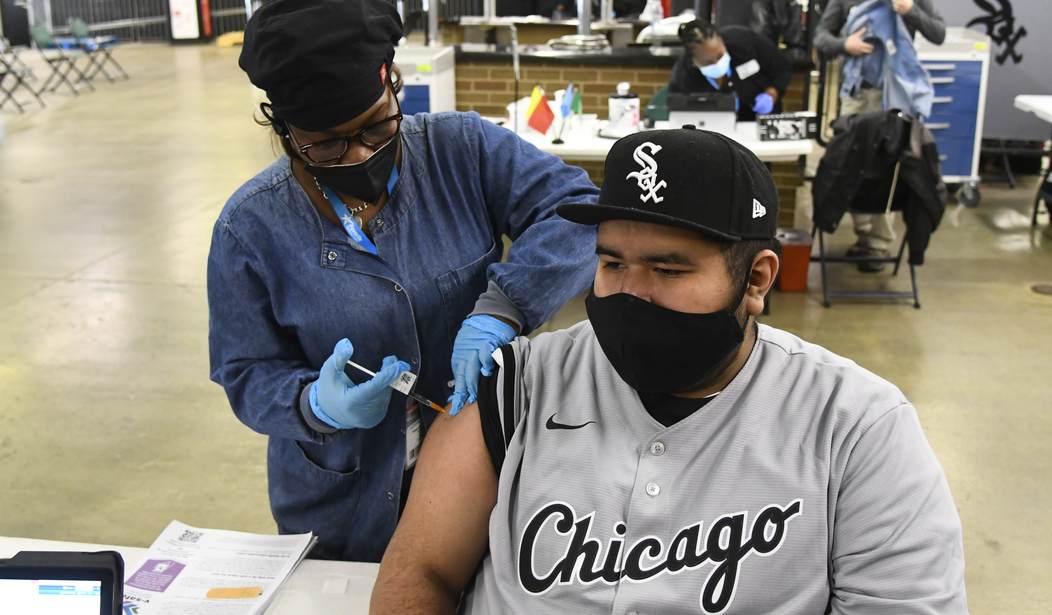The White House is excited and I don’t blame them. I thought the long, slow, steady decline in vaccinations was irreversible as a matter of basic logic. The more people who are vaxxed, the fewer remaining fencesitters there are. We must be into the “highly skeptical” group now, or else we’ll be there soon. Some of those people will be won over but others will finally shift into the “no way, no how, no chance” category and then we’ll be done.
So how do we explain vaccinations rising? Those state vax lotteries didn’t work better than everyone thought, did they?
I don’t think it was the lotteries. More on that in a second.
We're bouncing back up, seeing the number of vaccinations climb again! https://t.co/ZopEyxk5Vk
— Ronald Klain (@WHCOS) June 16, 2021
Here’s the trend line. Huh:

We hit bottom on June 5 with an average of 937,000 doses per day. Yesterday we were averaging 1.16 million. Why would there be a turnaround now?
I have two theories, not mutually exclusive. One is that more teenagers are getting vaccinated now that they’re eligible. The flaw in that logic is that they’ve been eligible for a month; why would we only be seeing an uptick in the past 10 days? The answer, I’d guess, may lie in the school year winding down. Now that it’s summer and the semester is over or in its final days, kids aged 12 and older have more free time to head down to CVS and get jabbed. If I’m right then we should see an uptick in the data of Pfizer vaccinations specifically since that’s the only vaccine approved for kids right now. And guess what:

J&J is flat and Moderna has ticked up slightly lately after ticking down in the first week or so of June. But Pfizer jumped. It’s gotta be the kids — partly. It could also be that some adults who’ve been meaning to get vaccinated but haven’t had the luxury of time are now able to take a week of summer vacation and carve out a day in case of side effects. There are more people like that out there than you might think.
The other theory is that some adults jumped off the fence lately because of the ominous data streaming in about the B.1.617 Indian/Delta variant. I wrote about its spread in the UK on May 30, as public awareness of it was increasing. On June 8, Fauci warned at the daily White House briefing that it was a serious threat to the unvaccinated here and urged everyone to protect themselves ASAP, a point amplified by other scientists. Meanwhile, there’s been more than one national news report over the past week that vaccinated people are hard to find in hospital COVID wards:
In Minnesota, the HealthPartners system has seen a “precipitous decline” in COVID-19 hospitalizations, says Dr. Mark Sannes, an infectious disease physician and senior medical director for the system, which operates nine hospitals and more than 55 clinics. But now, nearly every admitted patient he does see is unvaccinated.
“Less than 1% of our hospitalized COVID patients are vaccinated,”he said.
In Ohio, at University Hospitals Cleveland Medical Center, only 2% of the COVID-19 patients admitted in the last month were vaccinated, said Dr. Robert Salata, the hospital’s physician-in-chief.
And at Sanford Health, which runs 44 medical centers and more than 200 clinics across the Dakotas, Minnesota and Iowa, less than 5% of the 1,456 patients admitted with COVID-19 so far this year were fully vaccinated, said spokesperson Angela Dejene.
Since mid-April, the age group most likely to end up in the hospital are those 18-49, among whom vaccination rates are lower because young adults face less of a risk from the disease. Some people who were taking an “I’ll get around to it when I get around to it” approach to getting vaccinated may have been scared straight by the reports about B.1.617 and encouraged by the hospital data and finally carved out time to get dosed. A top health official in Idaho summarized the attitude of the complacent as “if a vaccine were to fall out of the sky and hit me in the arm, I’ll get it. But I’m not going to interrupt my busy daily life to make that effort and go in and get a vaccination.” The Indian variant has now given them a reason to make time.
But not enough of them. Not long ago, the 14-day trend in every state was downward. That’s now changed. The raw case numbers here are low but they’re rising again:

It was right around this time last year that cases began climbing in Texas and other southern states in what would eventually become the summer wave. We may be seeing the first inklings of a new on in this data. Note also that in every state listed above 40 percent of the population or less has been fully vaccinated. (In fact, only one state, Kansas, has a rate as high as 40.) B.1.617 plus lots of unvaccinated people are a bad combination. Stay tuned and hope for the best.









Join the conversation as a VIP Member